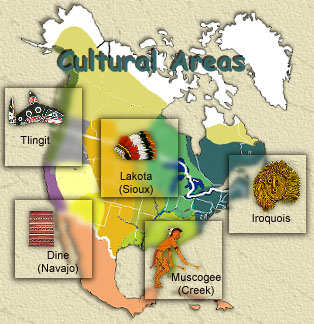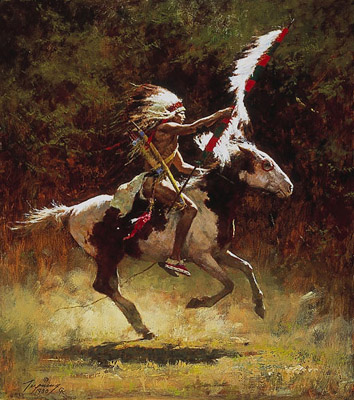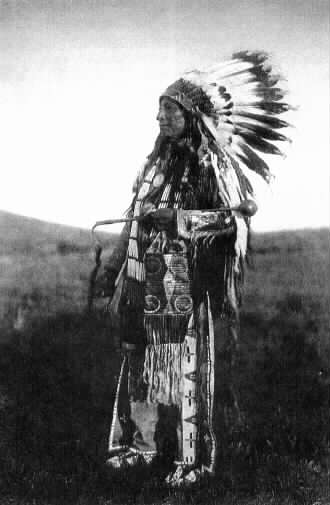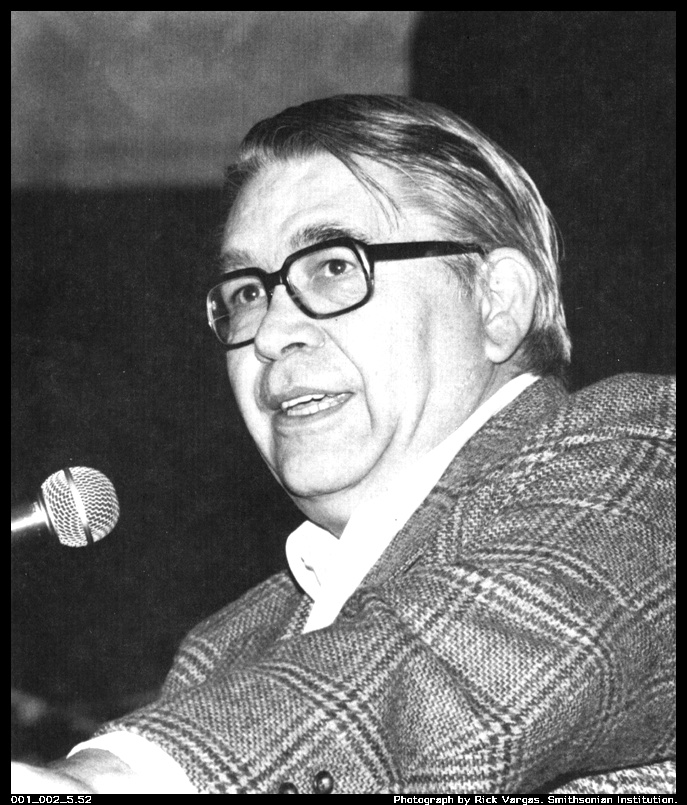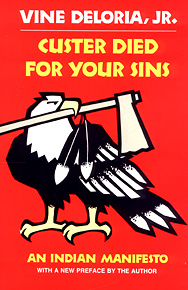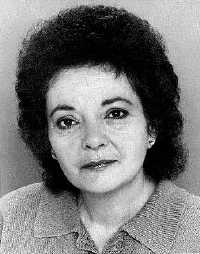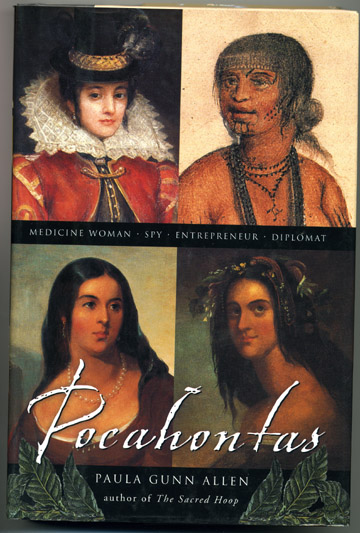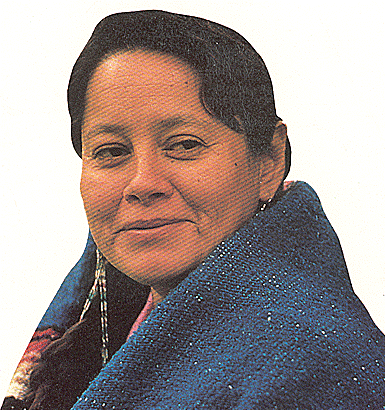 |
Craig White's Literature Courses Historical Backgrounds
Sioux Peoples
a.k.a. Oyate ("the People") |
http://www.ic.arizona.edu/ic/kmartin/School/links3.htm (more maps at bottom) |
Sioux among most important Indian peoples in American imagination, history, and literature.
Language group widespread in northwest, encountered at various stops by Lewis and Clark Expedition (1804-06).
Three major divisions of Sioux peoples (though as usual these names may not be what these groups call themselves):
Santee or Eastern Dakota
Middle Sioux a.k.a. Yankton or Yanktonai
Western Dakota, Teton, or Lakota
Within these groups are many sub- or local names: Oglala, Miniconjou, Brule / Sicangu, Wapehton, Hunkpapa, Blackfoot.
![]()
The Sioux represent "American Indians" for dominant culture's visual Imagination--e. g., feathered head-dresses, horseback riders, peace pipes.
|
|
|
![]()
Great Sioux leaders:
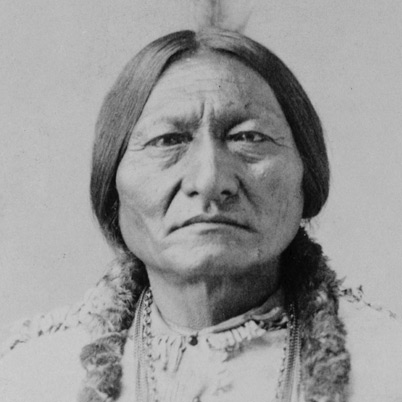 Sitting Bull (c. 1831-1890) 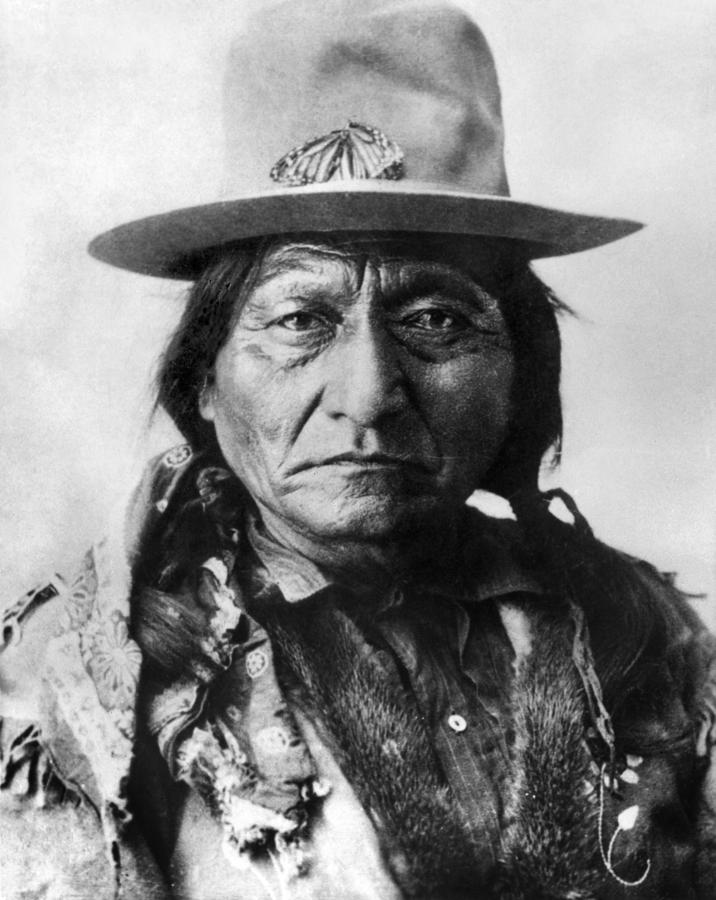 |
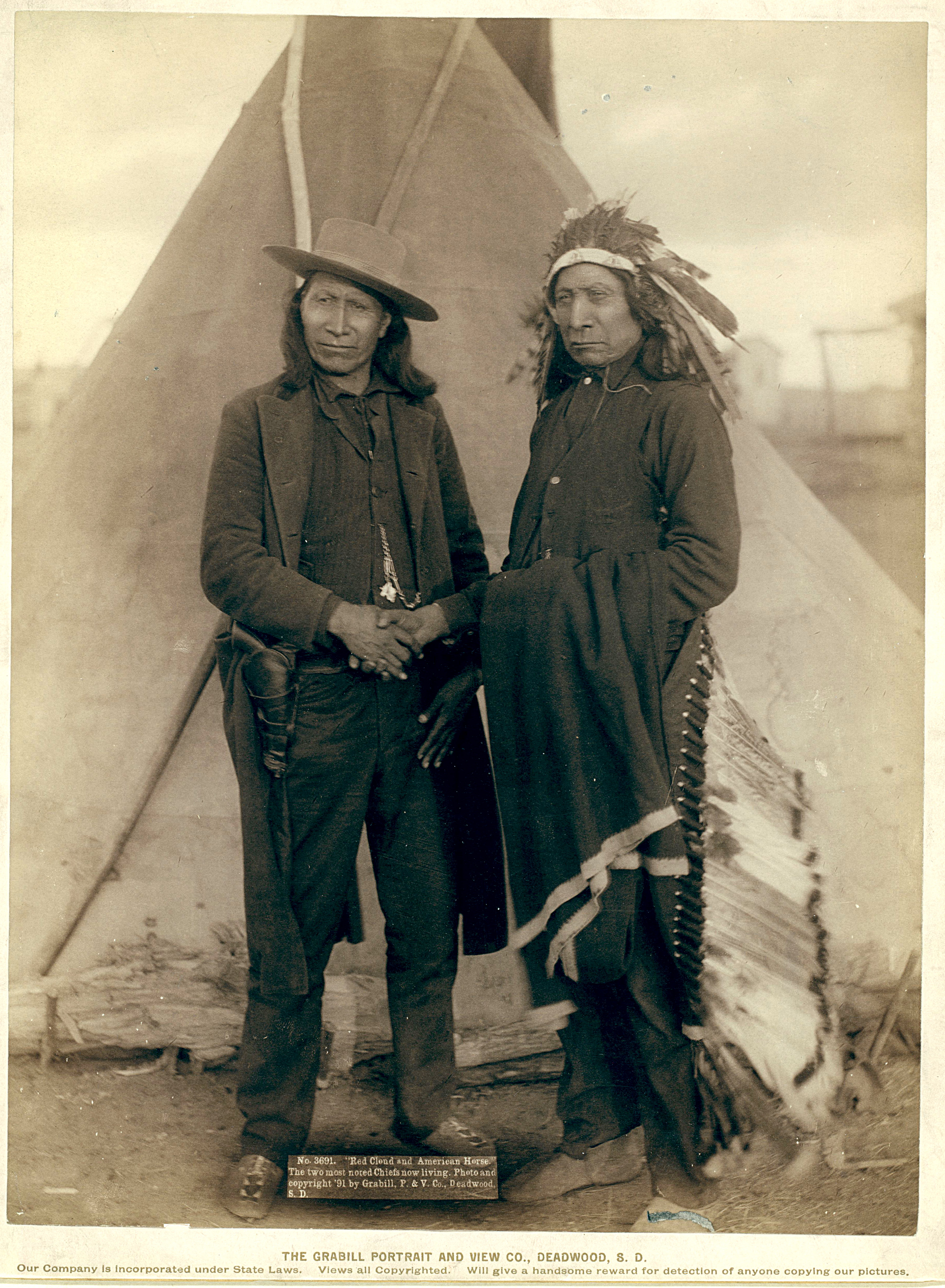 Red Cloud (1822-1909) with American Horse (1840-1908) |
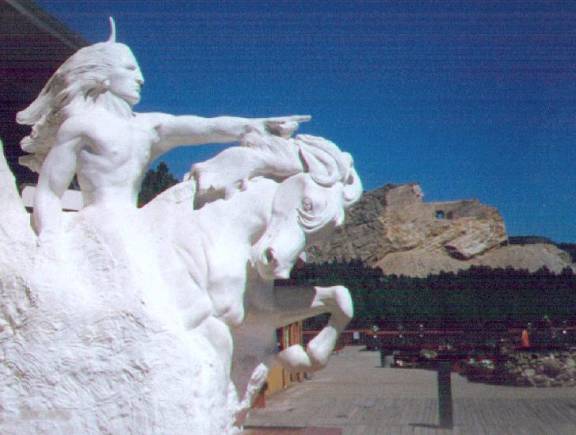 Crazy Horse (c. 1840-1877) no photos exist; Above left: model of Crazy Horse Memorial under construction in Black Hills of South Dakota (background) Below: Mormon missionary's sketch.  |
![]()
Outstanding literary figures include . . .
Black Elk (1863-1950), medicine man & holy man of the Oglala Lakota Sioux, second cousin of Crazy Horse. His autobiography, Black Elk Speaks, was freely rendered by Nebraska poet John G. Neihardt in 1932 and became an important basic reading in American Indian literature in the 1960s.
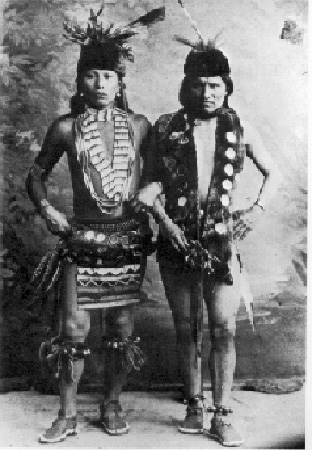 |
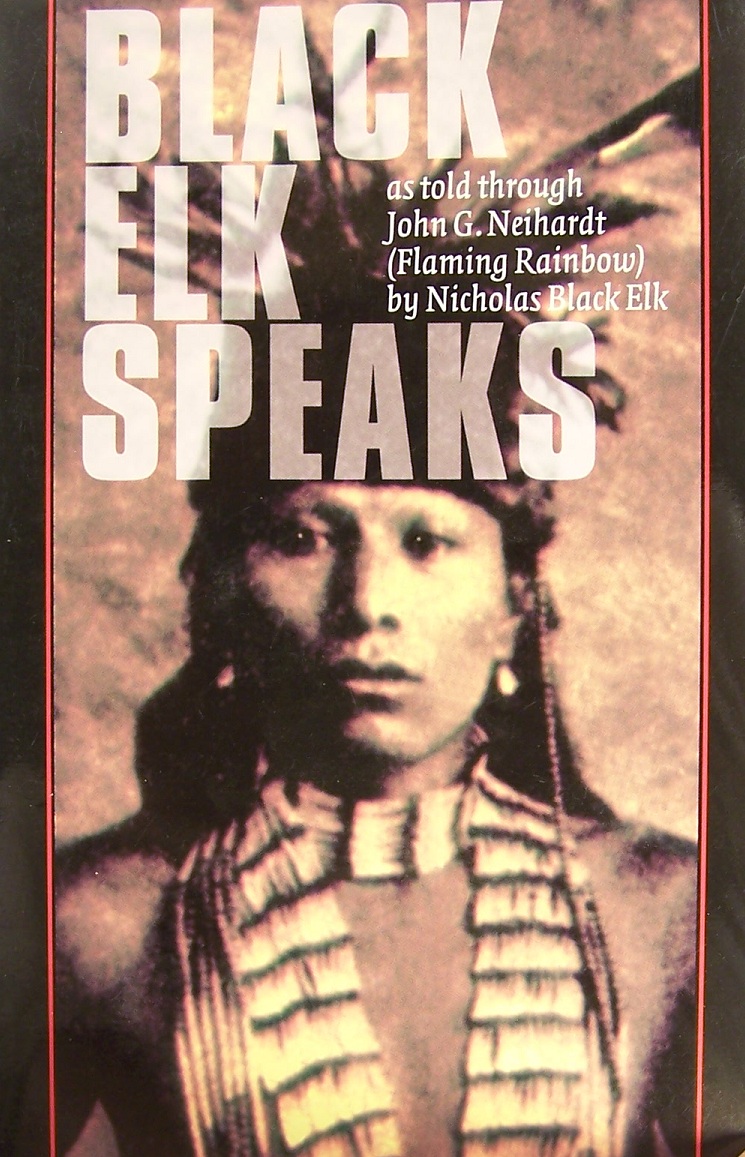 |
Zitkala-Sa (Gertrude Bonnin) (1876-1938), Dakota Sioux, author, editor, musician, librettist, activist. Writings include American Indian Stories (1921), Old Indian Legends (1901), Dreams and Thunder: Stories, Poems, and The Sun Dance Opera (2001, ed. P. Jane Hafen).
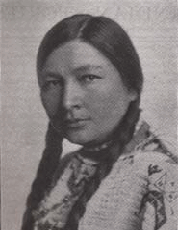 |
 |
Dr. Charles Eastman (1858-1939), Santee Sioux physician, author, reformer. Memories of an Indian Boyhood (1902), Old Indian Days (1907), The Soul of an Indian: An Interpretation (1911) merr
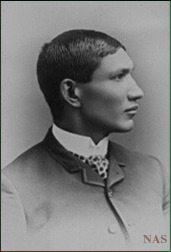 |
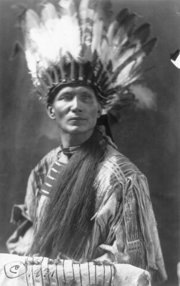 |
Vine Deloria Jr. (1933-2005), Yankton Dakota
|
|
|
Paula Gunn Allen (1939-2008) Sioux + Laguna, Scottish, Lebanese
|
|
|
Mary Ellen Moore-Richard, a.k.a. Mary Crow Dog, Mary Brave Bird (1954-2013): Sicanga / Brule Lakota
|
|
|
![]()
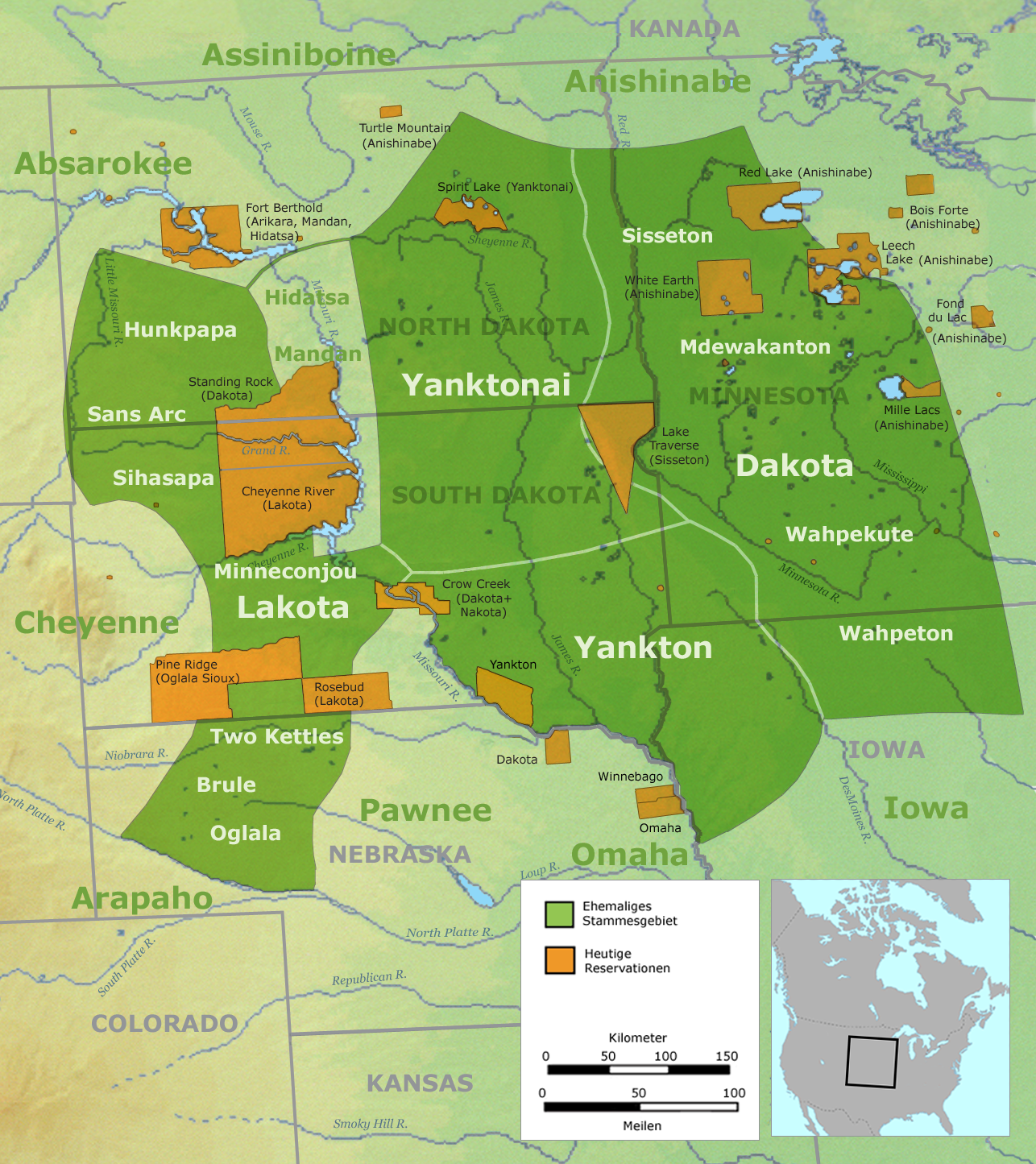
http://en.wikipedia.org/wiki/Santee_Sioux_Reservation
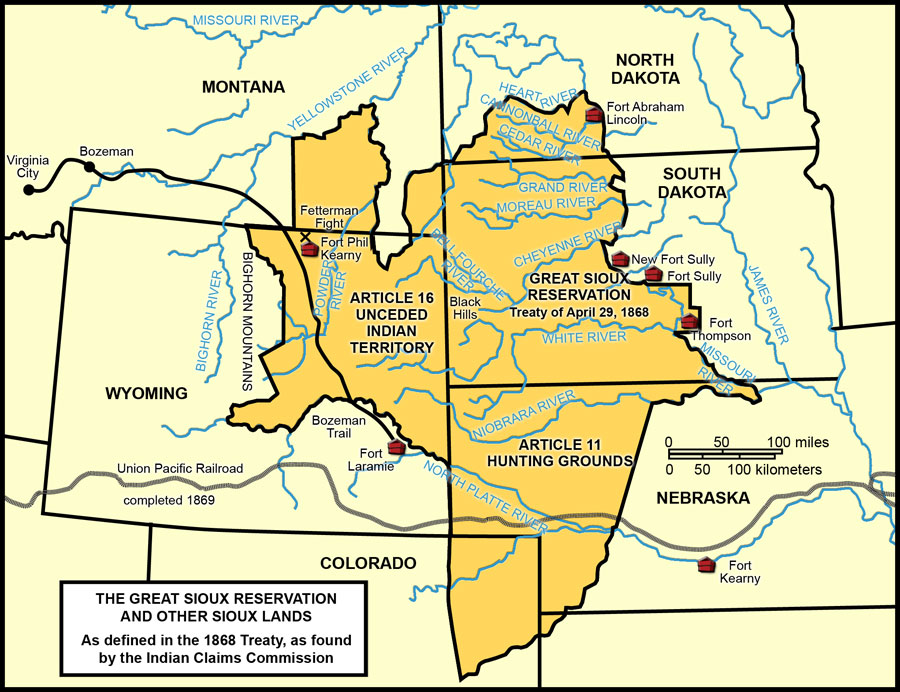
http://www.ndstudies.org/resources/IndianStudies/standingrock/historical_gs_reservation.html
In 1868 the Fort Laramie Treaty set aside 25 million acres for Sioux Reservation and hunting. Lakota who resisted the 1868 treaty continued to live in "unceded Indian territory," following the buffalo and living traditional ways. The Northern Pacific Railroad through Indian Territory agitated Sitting Bull and other traditional Indians. In 1874 the U.S. Government sent General George Custer and troops on an expedition to report on gold in Indian territory, news of which encouraged many white adventurers to enter Indian lands.
With white citizens wanting North and South Dakota as new states, in 1890 the U.S. Government forced the break-up of the Great Sioux Reservation into six smaller land areas, resulting in the loss of nine million acres of land that opened to white settlement. The Sioux Act of 1890 also set in motion allotment (individual instead of communal titles to Indian land) and opening of the reservation to non-Indians.
![]()
